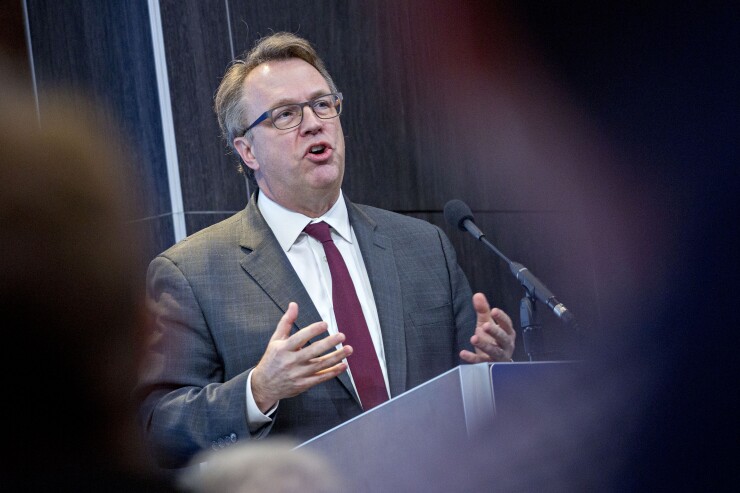Federal Reserve Bank of New York President John Williams voiced concerns that inflation expectations may have slipped downward after years in which price rises have failed to reach the central bank’s 2% target.
“We have seen some worrying signs of a deterioration of measures of longer-run inflation expectations in recent years,” Williams said Friday in the text of a speech he’s scheduled to deliver in New York. “The risk of the inflation expectations anchor slipping toward shore calls for a reassessment of the dominant inflation targeting framework.”

Preliminary data released earlier this month by the University of Michigan showed the five-to-10-year inflation outlook among consumers had slipped to 2.3%, matching the lowest on record. Market-based measures have also declined in recent months, with the Fed’s five-year forward break-even inflation rate at 1.8% on Feb. 15. It was above 2% for most of 2018.
The Fed is about to embark on a comprehensive review of its policy framework, including the way it seeks to deliver on its mandate, given by Congress, to keep prices low and stable.
Williams and San Francisco Fed researcher Thomas Mertens have argued in a January paper that allowing inflation to overshoot 2% when policy interest rates are above zero would help to keep inflation expectations anchored. Currently the Fed has a symmetric target set at 2% that disregards past inflation rates.
In his speech, Williams said the Fed shouldn’t take for granted that consumers and companies believe the central bank will continue to hit their inflation objective.
“We must not be complacent about inflation expectations becoming unmoored, whether at too high or too low a level,” he said at the annual U.S. monetary policy forum hosted by the University of Chicago Booth School of Business. “I am very pleased that the Federal Reserve is undertaking a review of our policy framework this year.”
Measured by the Fed’s preferred gauge, and excluding volatile food and energy components, inflation in the U.S. measured 1.9% in the 12 months through November. It topped 2%, on an unrounded year-over-year basis, just once since 2012.
Indeed, persistently low inflation has been around for decades, with so-called core inflation averaging 1.8% since 1993.
Williams cautioned not only about low inflation but also over the possibility that high inflation could return.
“Very tight labor markets could eventually lead to a resurgence of inflation and unmoor expectations, as in the 1960s,” he said. “We must remain vigilant regarding a sustained takeoff in inflation.”
U.S. unemployment was 4% in January, near its lowest level since the 1960s.
Williams’s remarks came in response to a paper presented at the conference by economists Peter Hooper of Deutsche Bank Securities, Frederic Mishkin of Columbia University and the University of Chicago’s Amir Sufi.
They argued that the Phillips Curve — which links changes in wages and inflation to the tautness of the labor market — was not dead, and said that the Fed should be cautious about running a high-pressure economy with low joblessness.
“The Fed needs to be especially watchful’’ for an awakening of the Phillips Curve, they wrote in their 65-page paper. “If inflation and especially inflation expectations start to rise and indicate a breach of the Fed’s 2% inflation objective, the Fed cannot remain ‘patient’ about raising the federal funds rate.’’
The Fed said on Jan. 30 it will be patient in deciding when and how to adjust monetary policy — a distinct pivot away from its earlier stance suggesting further gradual interest-rate increases were probably necessary.





